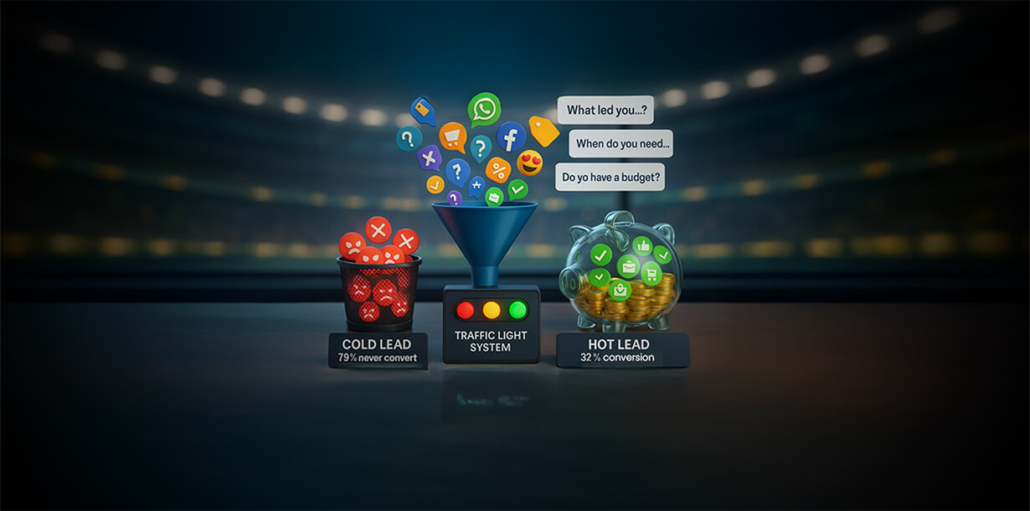The Science of Productivity in Conversational Commerce: What to Measure and How to Improve It
The WhatsApp notification pings. Your customer service agent glances at their phone, sees a product inquiry from a potential customer, and has exactly 30 seconds to make a decision that could mean the difference between a sale and a lost opportunity.
This moment—repeated thousands of times daily across Latin American businesses—represents the new frontier of commerce. Yet there is something that most companies are getting wrong. They’re measuring yesterday’s metrics for tomorrow’s reality.
After years of working with businesses across Latin America, we have discovered that the companies winning in conversational commerce aren’t just adopting new tools—they’re adopting new ways of thinking about productivity itself. They understand that when your sales floor becomes a chat window, everything changes.
Let me share what we’ve learned about measuring what truly matters.
The Four Pillars of Conversational Commerce Success
1. Sales Velocity: Moving Beyond Conversion Rates
Traditional e-commerce obsesses over conversion rates. In conversational commerce, that’s like judging a restaurant by how many people walk through the door instead of how many leave satisfied.
What to measure instead:
- Time to First Response: In Latin America, customers expect immediate acknowledgment. Track the seconds (not minutes) between initial contact and first agent response. Our data shows that responses within 60 seconds have 3x higher conversion rates.
- Conversation-to-Sale Velocity: Measure the complete journey from first message to closed sale. This isn’t just about speed—it’s about momentum. A conversation that takes three days but maintains engagement often outperforms a rushed same-day exchange.
- Message Exchange Ratio: Calculate the average number of back-and-forth messages needed to close a sale. Lower numbers indicate more efficient qualification and selling processes.
How to improve: Train agents to ask qualifying questions early. Instead of “How can I help you?” try “I see you’re interested in [product]. Are you looking to use this for personal or business purposes?” This single change can reduce message exchanges by 40%.
2. Service Efficiency: The Human Touch at Digital Speed
Customer service in conversational commerce isn’t about resolution time—it’s about resolution quality while maintaining human connection.
Essential metrics:
- First Contact Resolution Rate: What percentage of customer issues are resolved in a single conversation thread? This metric directly correlates with customer satisfaction and agent efficiency.
- Context Retention Score: How often do agents need to ask customers to repeat information already shared? Poor context retention destroys trust and wastes time.
- Escalation Prevention Rate: Track how many potential escalations are resolved at the first-line agent level through effective communication and problem-solving.
Implementation tip: Create conversation templates that feel personal. “Hi María, I understand you’re having trouble with your order #1234. Let me look into this right away and get you the exact information you need.” Notice how this acknowledges the person, demonstrates competence, and sets clear expectations.
3. Customer Satisfaction: Beyond the Survey
Net Promoter Scores have their place, but in conversational commerce, satisfaction reveals itself in behavior, not just responses.
Advanced satisfaction indicators:
- Conversation Completion Rate: What percentage of customers complete their intended journey without dropping off mid-conversation? This reveals friction points better than any survey.
- Return Conversation Frequency: Happy customers come back. Track how often customers initiate new conversations for additional purchases or questions—it’s a leading indicator of loyalty.
- Referral Mention Rate: Monitor conversations for phrases like “my friend recommended,” “I heard about you from,” or direct referrals. Satisfied customers become your marketing team.
Pro insight: The most satisfied customers often have the longest conversations, not the shortest. They engage deeply because they trust the process. Don’t rush to end conversations—nurture them.
4. Agent Productivity: Energy Management Over Time Management
In conversational commerce, productive agents aren’t just fast—they’re emotionally intelligent, technologically savvy, and relationship builders.
Comprehensive productivity metrics:
- Concurrent Conversation Capacity: How many meaningful conversations can an agent handle simultaneously without quality degradation? This varies by industry and complexity but is crucial for scaling.
- Revenue Per Conversation: Track the average sale value generated per agent conversation. This reveals who’s best at upselling and cross-selling through natural dialogue.
- Knowledge Base Utilization Rate: How effectively do agents use available resources during conversations? High performers know when to leverage tools without breaking conversation flow.
Emotional Labor Index: Measure the complexity and emotional intensity of conversations handled. Some agents excel with difficult situations; others shine with high-volume, straightforward inquiries.
The Latin American Context: Why These Metrics Matter More Here
Latin American markets present unique opportunities that make these metrics especially critical:
Relationship-First Culture: Trust isn’t built through transactions—it’s built through conversations. Our metrics must capture relationship quality, not just transaction efficiency.
Mobile-First Reality: With smartphone penetration exceeding 70% across major Latin American markets, conversational commerce isn’t a channel—it’s the channel. Your metrics must reflect this reality.
Economic Sensitivity: Purchase decisions often involve multiple family members and careful consideration. Successful metrics track engagement over time, not just immediate conversions.
Implementation Roadmap: Start Measuring Tomorrow
Step 1: Implement time-to-first-response tracking. This single metric will immediately reveal your biggest opportunity gaps.
Step 2: Begin tracking conversation completion rates. You’ll discover where customers are getting frustrated and abandoning their journey.
Step 3: Start measuring concurrent conversation capacity by agent. This reveals training needs and optimal workload distribution.
Step 4: Introduce revenue-per-conversation tracking. This transforms how agents think about each interaction.
Step 5: Implement the full suite of metrics with dashboard visualization for real-time optimization.
The Compound Effect of Better Measurement
Here’s what businesses discover when they implement these metrics: productivity isn’t just about doing things faster—it’s about doing the right things in a way that builds relationships, drives sales, and creates sustainable growth.
The science of productivity in conversational commerce isn’t about replacing human connection with metrics—it’s about using measurement to enhance our ability to connect, serve, and grow.
Your customers are waiting for your next WhatsApp message. Please don’t just answer, measure what makes that response truly productive, or not.
Please, let me know in the comments below: what will you start measuring this week?




